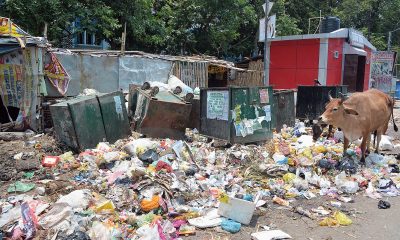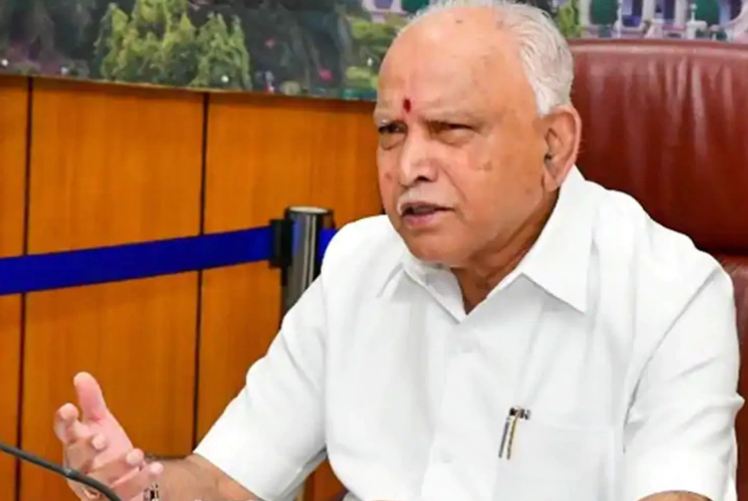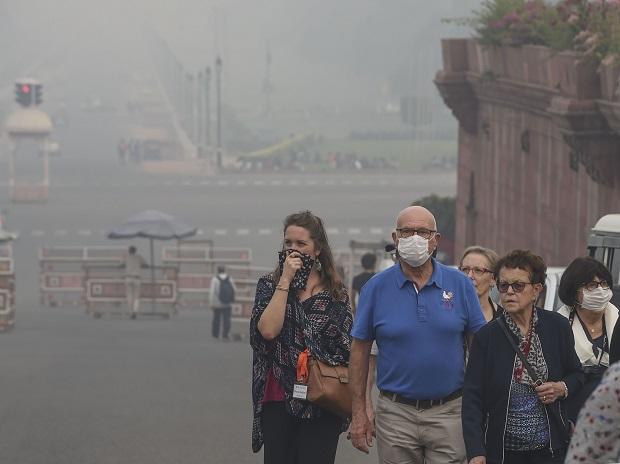Gadgets
India at the bottom in environment performance index, 177th among 180 countries: CSE
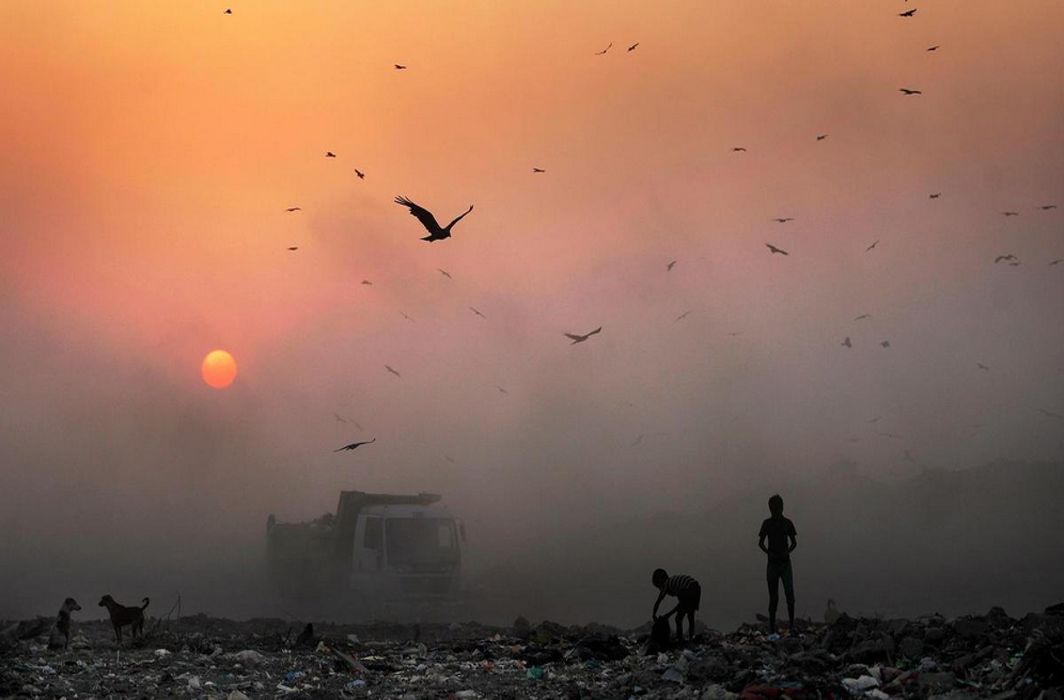
Playing the host nation on World Environment Day and getting praise for its contribution in fighting climate change, there was a rude shock that came as a reality check: India’s poor performance in tackling environmental problems was brought out in a report that showed that the country has, in fact, slid in ratings.
Failing to improve its air quality, protect biodiversity, and cut greenhouse gas emissions, India stands at the bottom of the Global Environment Performance Index (EPI) rankings.
In 2016, the country had ranked 141 out of 180 countries. In 2018, according to the State of India’s Environment (SoE) 2018 in Figures, it has slipped to the 177th position. The State of India’s Environment (SoE) report was put together by Down To Earth magazine, which Centre for Science and Environment (CSE) helps publish.
Air quality: India scored 5.75 out of 100 in air quality. India’s disappointing performance and the gravity of the situation is further highlighted when compared with countries such as Switzerland and Japan which have scored over 90, said the SoE report.
Delhi is always in the news for its poor air quality. However, an analysis of the winter (November and December 2017) and summer (April-May 27, 2018) air quality levels of 10 state capital cities shows that they too are in the dangerous grip of a multi-pollutant crisis, and are currently facing a severe health challenge.
While in the summer months Delhi had 65 per cent days when poor and very poor air quality was recorded, in winters this percentage increased to 85. On only about 1 per cent of the monitored days in summer months was the air quality observed to be satisfactory in the city.
Lucknow fared much worse in the winter months, where very poor air quality was recorded on over 70 per cent of the monitored days and severe levels of air pollution witnessed on around 24 per cent of the days.
Thiruvananthapuram, Bengaluru and Chennai, on the other hand, experienced comparatively better air quality.
Moreover, there is serious lack of data on air quality. Said Anumita Roychowdhury, who has headed CSE’s air pollution control team for many years: “The SoE in Figures finds a lack of data on air quality in several Indian cities. Even in places where pollution levels are being monitored, gaps in data pose a serious challenge to successful implementation of the National Clean Air Programme (NCAP).”
Water: The Ministry of Drinking Water and Sanitation launched the Har Ghar Jal Yojana to provide piped water supply to every household by 2030 to meet the Sustainable Development Goals. However, in 18 Indian states and UTs, over 82 per cent rural households, which is the national average, remain without a tapped connection.
Worse, according to Suresh Rohilla, the head of CSE’s water management team, “The dependency on groundwater has increased between 2004 and 2013.”
SoE in Figures says that 70,736 rural habitats with a combined population of 47.4 million live on contaminated groundwater. Traces of new contaminants are now being reported in the country, suggesting a steady decline in the quality of groundwater.
Sanitation: Under the Swachh Bharat scheme, 72.1 million individual household toilets have been constructed; however, little has been done to popularise their use — rendering the scheme ineffective. Funds allocated for spreading awareness among people, crucial for success in rural areas, have been lying unused.
The situation in urban areas is much worse, according to CSE’s water and sanitation experts — with close to a million households waiting for over six months for toilets to be constructed.
Energy: India is lagging seriously behind in meeting targets of renewable energy, said the report. After missing its targets for two consecutive years, the Centre, it appears, is fast losing interest in meeting its ambitious target of installing 175 gigawatt (GW) of renewable energy by 2022. The poor performance will also hit the job-creation potential of the scheme which was estimated to be over 300,000. Only 9 per cent of the roof-top solar target has been met so far.
On the other hand, even as the Centre’s Ujjwala Yojana has covered all states, LPG distribution has taken place significantly in only 15 states. And even here, a substantial portion of rural population relies on unhealthy firewood for cooking.
Forests: While India’s total forest cover has registered a 0.2 per cent increase between 2015 and 2017, there are some serious concerns over the growth pattern.
Says Richard Mahapatra, managing editor, Down To Earth: “The bulk of the increase has taken place in the open forest category, which includes commercial plantations – which is worrying. And this has happened at the cost of moderately dense forest category, which is normally the area close to human habitations.”
When it comes to forest clearances, in 2017, the Central government, on an average, gave clearances to close to six developmental projects a day in forest areas. Overall, there has been a 146 per cent increase in forestland diversion for non-forest activities in the past one year with maximum diversions recorded in Madhya Pradesh, Telangana and Odisha, which together accounted for 54 per cent of the total diverted area.
Adding to the woe is the increasing number of forest fires in the country – which have gone up by 125 per cent within just two years (2015-2017). The government, in this regard, has not only failed to utilise funds earmarked to contain forest fires but has also missed two NGT deadlines for coming up with a national policy to fight the fires.
Environmental crimes: Since the National Green Tribunal (NGT) was set up in 2010, the number of environment-related police cases seem to be gradually decreasing. However, the number of court cases has drastically gone up.
In 2016, the number of registered environment-related crimes stood at 4,732, while 1,413 cases were pending police investigation. Cases pending in the courts were at a staggering 21,145. This made up for 86 per cent of the total environment-related offences in the country. With the NGT forced to close its regional benches in 2018 due to staff crunch, the situation is likely to worsen.
The number of cases being disposed per day stands at 9.3 on an average, according to 2016 data. At this pace, it will take six years for the court to finish the existing backlog. To make matters worse, 15 states registered an increase in environmental crimes between 2015-16 — Uttar Pradesh, Rajasthan, Maharashtra and Assam were among the states that witnessed the highest number of registered environmental crimes.
Gadgets
WhatsApp to introduce Native File Sharing feature similar to Apple’s AirDrop
Users can choose to be visible to others without disclosing their phone numbers to people who are not their contacts.

A Meta-owned messaging platform, WhatsApp is all set to introduce a new feature that allows Android users to share files with another user nearby. According to reports, the feature will be developed similar to Apple’s AirDrop.
The file sharing feature nearby is not currently available for beta testers. However, according to a report from WhatsApp feature tracker WABetaInfo, it seems that the feature will soon be introduced. The report reveals a screenshot that shows an option within the app stating, to share files with people nearby, along with a list of nearby users.
It is interesting to note that users can choose to be visible to others without disclosing their phone numbers to people who are not their contacts. In order to share files with other users, one needs to wait for nearby users to accept their request. The process involves a unique interaction, where nearby users can shake their device to receive incoming share requests. It is important to note that this feature is designed with end-to-end encryption to ensure user privacy.
In the upcoming update, WhatsApp is expected to introduce a nearby file-sharing feature. However, the current beta version for Android, which is 2.24.2.20, has addressed a camera issue. Some Android beta testers have reported difficulties in launching the camera within the app after the 2.24.2.13 update. Upon launching, users were presented with an error message that said, can’t start camera, please restart your device. This issue persisted even after restarting the device or relaunching the app.
The latest beta update of WhatsApp, located at 2.24.2.20, has fixed the camera bug. This allows users to launch the camera within the app and share photos and videos with their contacts without any interruptions. As WhatsApp continues its efforts to improve its features and address bugs, users can expect a better messaging experience on the platform.
Gadgets
Meesho mega blockbuster sale: E-commerce platform to offer 80 percent discount on electronics
The e-commerce platform’s first mega blockbuster sale will sell more than 400 brands directly with the help of authorised partners on its digital store called Meesho Mall.

Ahead of the festive season, e-commerce platform Meesho’s mega blockbuster sale is starting on Friday, October 6, 2023. The platform will provide a massive discount of up to 80 percent on different categories such as essentials, accessories, electronics, footwear, etc.
The blockbuster sale is scheduled to conclude on October 13, 2023. Notably, the Softbank backed e-commerce platform is starting its festive sale a day before Flipkart or Amazon’s festive sale goes live. The e-commerce platform’s first mega blockbuster sale will sell more than 400 brands directly with the help of authorised partners on its digital store called Meesho Mall.
Reportedly, the platform also added over 50 lakh new customers during these sales. More than 75 percent of the demand was received from Tier-II cities, including Amravati, Aurangabad, Dehradun, Nellore, Solapur, and Warangal. The platform further claimed that they have added more than 2 lakh sellers in the past two years.
Recently, Meesho affirmed that they have received over 10 million (approx) from its pre-festive sales during Onam, Raksha Bandhan, and Ganesh Chaturthi. The platform has more than 14 lakh sellers, selling approx 12 crore products in 30 different categories.
In an effort to increase the seller base, the company announced the onboarding of non-GST sellers on the platform earlier this week. The GST council announced to permit the e-commerce platform to onboard sellers with turnover of up to Rs 40 lakh.
Prior to Meesho’s Mega Blockbuster Sale, the company introduced a loyalty programme during which eligible users will earn Smart Coins, which the user can redeem every time they make the purchase of any products on the platform.
As per Redseer, over 140 million shoppers are likely to make purchases during the festive season. This will enhance the Gross Merchandise Value (GMV) of the Indian e-commerce sector by 18 to 20 per cent and may touch Rs 90,000 crore as compared to Rs 76,000 crore last year.
Phones & gadgets
Apple launches iPhone 15 series, India price, features, availability
The iPhone 15 series will be available in India from September 22 but iPhone lovers can also pre-order, starting from September 15 onwards.

Apple launched its most anticipated iPhone 15 series, including the iPhone 15, iPhone 15 Plus, iPhone 15 Pro and iPhone 15 Pro Max during the Wonderlust event globally on September 12 night.
The iPhone 15 series will be available in India from September 22 but iPhone lovers can also pre-order, starting from September 15 onwards.
People can buy a new iPhone 15 or upgrade it to the old one. There are five colours available for the people.
According to reports, Apple has been manufacturing the iPhone 15 series in India and China. Apple has moved 7% of its iPhone production to India. Previously, India was not making the newest models. The Centre’s production-linked incentive (PLI) scheme for smartphones played a part in Apple moving its production to India.
The new iPhone 15 has been launched with the same starting price as its prototype, the iPhone 14. The 128GB variant is priced at Rs 79,900, while the 256GB variant costs Rs 89,900. For people who need more storage, the 512GB variant is available for Rs 1,09,900.
This latest iPhone series puffs a 6.1-inch display and comes in five different colours which are pink, yellow, green, blue, and black. While the design remains the same as the previous models, the iPhone 15 features a dynamic island notch instead of the usual notch, which was highly popular among the iPhone 14 Pro phones.
The camera part of the iPhone series has undergone significant upgrades, the new iPhone 15, with an enhanced 48-megapixel primary sensor replaces the 12-megapixel dual camera system which was available in the previous iPhone 14. This significant improvement promises better low-light photography and portrait shots.
The tech giant announced that the iPhone 15 has an all-day battery life, making it more convenient for users to go about their daily activities without worrying about their phone’s battery.
The iPhone 15 Pro models feature a lighter body and thinner bezels. The new AirPods Pro with USB-C charging case will support Lossless Audio with Apple Vision Pro.
Additionally, the iPhone 15 is powered by Apple’s A16 bionic processor, an upgrade from the A15 bionic chipset used in the previous iPhone 14 and iPhone 14 Plus models. The Pro models had the faster and better A16 chip, but now this feature is available in all iPhone 15 models.
The USB-C port on the standard iPhone 15 and iPhone 15 Plus remain limited to lightning speeds up to 480 Mbps. The iPhone 15 Pro and iPhone 15 Pro Max support USB 3 speeds up to 10 Gbps. People will need to buy a separate 1-meter Thunderbolt 4 Pro cable for Rs 5,724 or Rs 10,701 for the 1.8-meter cable to support faster speeds.
The dynamic island notch feature, which can adjust its size according to notifications, was widely discussed before the launch of the iPhone 15. This unique feature can now be available in all models of the phone.
Another important feature of the iPhone 15 is the shift to the USB Type C charging port. Apple has abandoned the lightning port in favour of the more commonly used USB Type C charging port. This means, there is no longer a need for a special iPhone charging cable to be carried around everywhere you go.
-

 Cricket news24 hours ago
Cricket news24 hours agoHappy Birthday KL Rahul: Suniel Shetty wishes son-in-law KL Rahul on his 32nd birthday
-
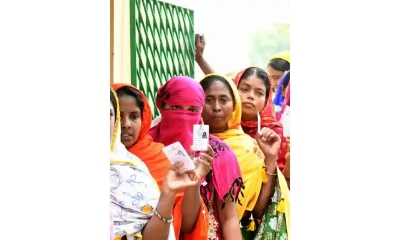
 2024 Lok Sabha Elections7 hours ago
2024 Lok Sabha Elections7 hours agoPrime Minister Narendra Modi urges citizens to vote in record numbers as voting for first phase of Lok Sabha elections begins on 102 seats across India
-

 India News23 hours ago
India News23 hours agoEnforcement Directorate seizes Shilpa Shetty’s husband Raj Kundra’s properties worth Rs 97 crore
-
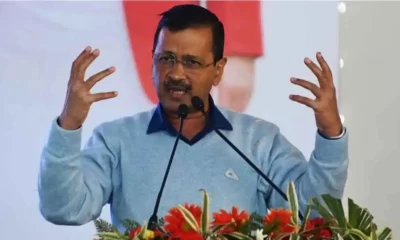
 India News21 hours ago
India News21 hours agoEnforcement Directorate says Arvind Kejriwal is deliberately eating mangoes, sweets, taking sugar with tea to increase his blood sugar level and create ground for bail
-

 2024 Lok Sabha Elections5 hours ago
2024 Lok Sabha Elections5 hours agoKamal Haasan, Rajinikanth, Vijay Sethupathi, Dhanush vote in Chennai
-

 2024 Lok Sabha Elections6 hours ago
2024 Lok Sabha Elections6 hours agoLok Sabha elections 2024: Google Doodle marks the start of polls with index finger voting symbol
-

 2024 Lok Sabha Elections5 hours ago
2024 Lok Sabha Elections5 hours agoLok Sabha elections 2024: TMC, BJP workers clash in West Bengal’s Cooh Behar ahead of voting
-

 2024 Lok Sabha Elections4 hours ago
2024 Lok Sabha Elections4 hours agoLok Sabha elections 2024: Newly married couple cast vote in Jammu and Kashmir’s Udhampur, video goes viral



